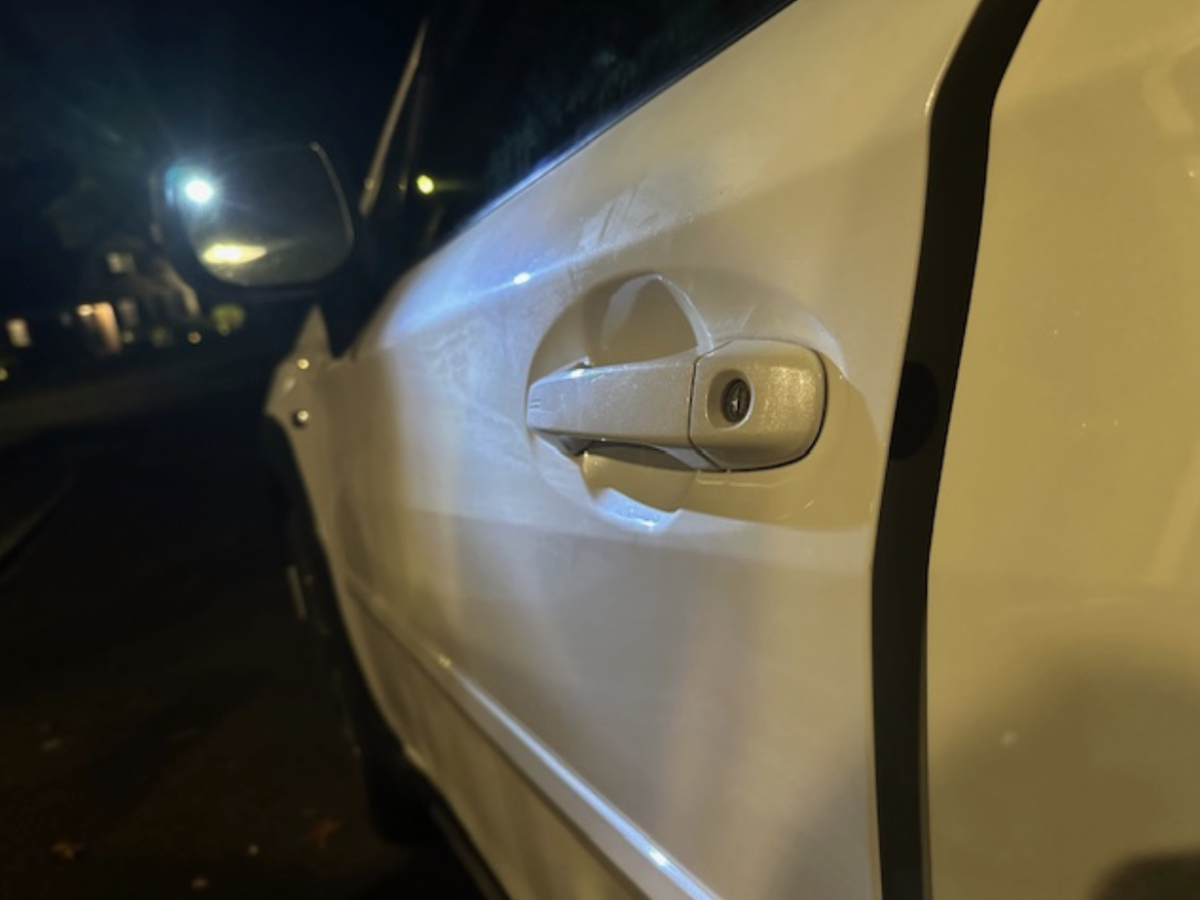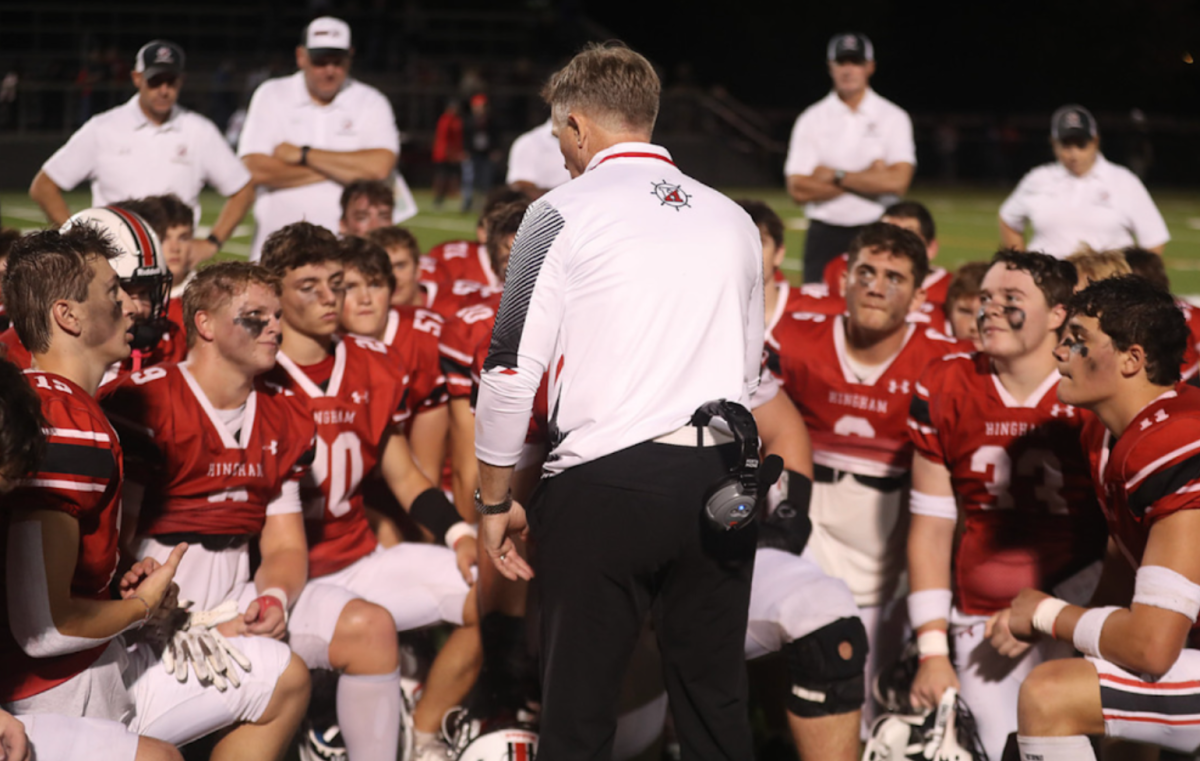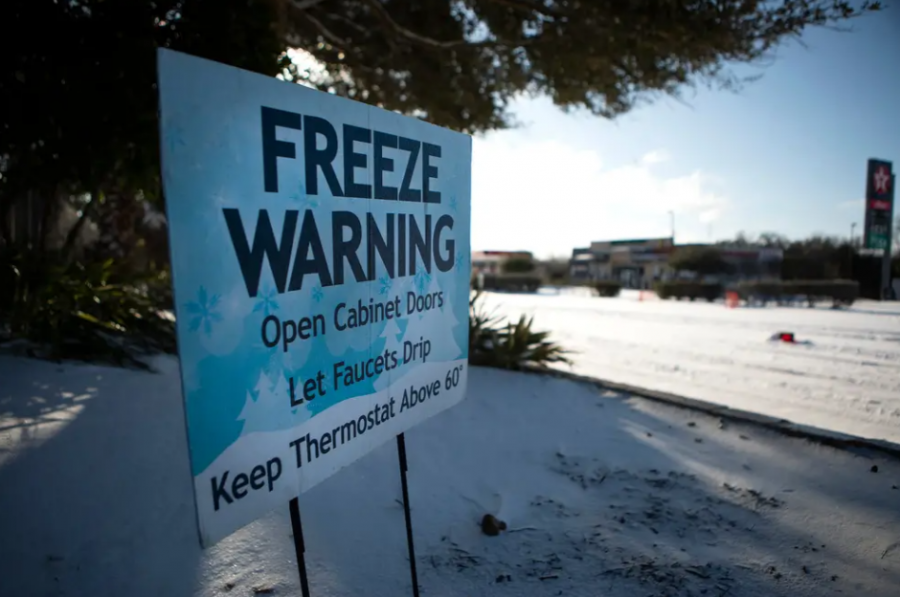Snowstorms in Texas Leave Communities Ravaged while Lackluster State Government Assistance Fails To Change Anything
Miguel Gutierrez Jr./The Texas Tribune
A sign warns Austin residents of the dangers of the freezing temperatures.
February 28, 2021
In a year predicted to be full of weather anomalies, no one could have predicted just how devastating snow in the South would be. Over the past few weeks, abnormal amounts of snowfall and deep freezes have caused great harm to communities in Texas. Storms amounting to up to nine inches of snow in some counties hit the unprepared state. The snow and ice have caused power lines to freeze over, leaving millions of residents without power. But what has led to these high levels of snow? How have Texas administrators responded? And how will this affect communities in the future?
What Caused the Snow?
The first thing to note is that while snow in Texas is uncommon, it is not unprecedented. It has snowed in Houston 94 times since 1881. A cold snap caused the current snowstorms in Texas. Put plainly, the temperature in Texas has dropped substantially, hitting some of the lowest temperatures Texas has seen in the past 30 years. Some areas even broke temperature records that are over a century old. Some parts of Texas even hit 0℉ in the past few weeks. What is truly unprecedented is that all 254 counties in Texas have a Winter storm warning put in place. According to the US National Weather Service, these cold temperatures originated just above the US-Canadian border and have now spread through the US.
What Caused the Blackouts? Confusion and Conspiracy Plague National News.
Throughout the country, there have been large amounts of confusion about what caused the blackouts plaguing Texas. A common scapegoat is renewable energy. Government officials and news outlets alike have claimed that failed renewable energy has caused the blackouts in Texas. However, much of this information is incredibly untrue or based on misconceptions.
Firstly, significantly more natural gas and coal-powered buildings went offline than those run by renewable energy. That’s not to say that natural gas and coal are at fault. Since they provided a higher level of power, it would make sense that they had substantial losses. Texas power grid operators deny that one specific source of energy could cause a power crisis.
But if a specific source of energy isn’t causing the blackouts, then what is?
According to NPR, the blackouts skyrocketing electricity demand caused the blackouts. As people across the state plugged in their heaters, the electricity demand increased. As the market went up, supply went down. Nearly every source of electric power suffered. Wind turbines did, in fact, freeze, but so did natural gas wells and pipelines. Coal pipelines and nuclear power plants also froze up. Electrical equipment panels froze from the weather as well. With roads being dangerous to travel, workers had a hard time reaching sites that needed help.
Additionally, Texa’s power grid is entirely self-sustaining, not relying on other states in case of energy failures. This made Texas unable to receive assistance from neighboring states and worsened the power crisis.
Essentially, the power grid can sustain extreme summers, not cold winters. When an unprepared power grid meets a statewide weather anomaly, a system-wide failure is bound to occur. The only way that Texas could have prevented this is if they prepared better than they did.
How Legislators are Responding:
By now, Ted Cruz’s trip to Cancún is infamous in the public eye. As his state faced a deadly storm, Cruz and his family left for a pre-planned vacation to Mexico. He has since returned and is now desperately trying to save his reputation. Since returning from Mexico, Cruz has served barbecued food to first responders and has stated that he views his trip to Mexico as “A mistake.” He has also apologized for a past tweet in which he criticized the “Failed energy policies,” of California.
However, Cruz’s lackluster response to the crisis should not be the focus of our country. President Joe Biden has declared an emergency in Texas so that federal agencies can contribute to disaster relief in the state. Rotating power outages have also gone into effect so that Texas can better manage its energy use.
Other Problems Related to The Storms and What Will Happen Moving Forward:
Texas was unprepared for winter storms in more ways than just a failing power grid. One of the main problems that have resulted from the snowstorms is an increasing number of traffic accidents. On one Texas freeway, there was a pileup of nearly 120 cars. Sleet and rain have made road conditions icy and dangerous, making driving unsafe for many Texans.
As of Monday, CNN reported that many Texas residents remained without power. The electric failures have substantially impacted many citizens, especially those in lower-income areas. People who can not afford home insurance may be suffering from this disaster for weeks and maybe even months.
Millions of Texans are currently without a reliable source of water due to freezing pipes. Nearly one-third of the population of Texas is having water disruptions. There are also many problems related to getting clean water to residents.
Hopefully, Texas will recover from this crisis soon. However, this snowstorm, plus the ongoing pandemic, makes a quick recovery seem incredibly difficult.
































